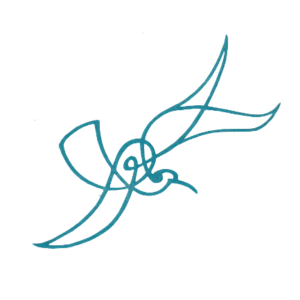Metaphorum 2025: Collective intelligence, agency and resilience.

Manchester Business School, Manchester, UK July 3rd - 5th 2025
The main selected themes were:
- Theme 1: VSM meets AI for Navigating the Unpredictable – The Cybernetic Bridge: Managing identity through surprise.
Lead: Stephen Brewis - Theme 2: Organisational Resilience in Action: Enhancing Viability in Dynamic Systems. Lead: Ayham Fattoum
- Theme 3: Developments of the Viable System Model and Team Syntegrity: incorporating innovation in science, methodology and applications. Lead: Allenna Leonard & Juliana Alves
In addition we did run two workshops:
- Workshop 1: A Viable System Model (VSM)’s Master Class.
Lead: M Pfiffner, J. Perez-Rios (t.b.c.), A Espinosa - Workshop 2: A Team Syntegrity (TS) experience,
Leads: A. Leonard & J Alves
Recorded presentations
Schedule
Thursday, July 3 |
|
|---|---|
09:00 BST |
Onsite Registration and Networking |
10:00 BST |
Official opening and welcome by the organizers team Speakers: Angela Espinosa, Jon Walker, Allenna Leonard, Ayham Fattoum |
10:15 BST |
Problem Jostle Speakers: Jon Walker, Angela Espinosa, Ayham Fattoum, Allenna Leonard |
11:15 BST |
Coffee break |
11:30 BST |
Raul Espejo – Welcome to the Conference on ‘Collective Intelligence, Agency and Resilience” |
11:45 BST |
Observing interactions- a project background
Speakers: Igor Perko Designing for Regeneration: Activating Collaborative Intelligence in Living Systems Speakers: Jan De Visch |
12:45 BST |
Lunch |
13:45 BST |
The Viable System Model for Strengthening the Resilience of Rural Communities in Mexico City’s Water and Tourism System
Speakers: Zeltzin Pérez Matamoros Workshop: A Blueprint for a ‘state of the art’ (VSM) Environment for Decision Making Speakers: Steve Brewis, Angela Espinosa, Martin Pfiffner, Jose Perez Rios, Jon Walker |
14:45 BST |
Viable Sustainable Missions (2VSM): Toward Recursive Governance for Systemic Sustainability Speakers: Pedro Pablo Cardoso, Nirvia Ravena de Sousa |
15:45 BST |
Coffee break |
16:00 BST |
Climate Change and three models of governance to deal with it: Polycentricity, Experimentalist, and the Viable System Model
Speakers: Brian Lederer The Viable System Model as a Framework for National Sustainability: Insights from the UAE’s Governance Structure Speakers: Dr Iffat Sabir Chaudhry |
17:00 BST |
Closing of Day 1 |
19:00 BST |
Informal gathering – Later in the bar |
Friday, July 4 |
|
|---|---|
09:00 BST |
Designing Adaptive Governance for the Water-Energy-Food Nexus: A Viable System Approach in the Face of Systemic Risks Speakers: Juliana Mariano Alves, Jon Walker |
09:30 BST |
How might system science improve human wellbeing? Speakers: Shann Turnbull |
10:30 BST |
Coffee break |
10:45 BST |
Protocols for Change
Speakers: Ivo Velitchkov Workshop: Enhancing VSM: Integrating Resilience and Human Values for System Viability Speakers: Stephen McGibbon, Ayham Fattoum, Andrew Basden |
11:45 BST |
Transduction and Identity: process and dynamics of adaptation in Viable Systems. Speakers: camilo osejo bucheli |
12:45 BST |
Lunch |
13:45 BST |
VSM Master Class (I)
Speakers: Angela Espinosa, Martin Pfiffner, Jose Perez Rios, Wolfgang Lassl Integrating Diversity of Meaning into VSM Diagnosis and Design Speakers: Andrew Basden |
14:00 BST |
‘Feeding the model’: field methods for the novice VSM practitioner Speakers: Michael Lingard |
14:15 BST |
An endeavour towards efficiency for discussion at the VSM Masterclass Speakers: Laura Joanne Donovan-Holmes, Laura Donovan-Holmes |
14:30 BST |
What is an effective VSM ‘elevator pitch’ to audiences unfamiliar with Systems Thinking? Speakers: James Brewer |
14:45 BST |
VSM for Segmenting a UK-Wide Multi-Stakeholder Project
Speakers: Taiwo Alaje From Alien Intelligence to Systemic Coherence: Toward Viable Human–AI Collaboration through VSM, GHAS, and the Science of Fit–Form–Function Speakers: Gary Smith |
15:00 BST |
Navigating the Wild West: Applying the Viable System Model from the Margins of Power Speakers: Malik Radwan |
15:15 BST |
VSM Master Class (II) Speakers: Angela Espinosa, Martin Pfiffner, Jose Perez Rios, Wolfgang Lassl |
15:45 BST |
Coffee break |
16:00 BST |
The final clue of viability … Is it hidden in Dorian Gray’s picture?
Speakers: Wolfgang Lassl The Process Industry Neurology Project Speakers: Chris Hamlin, Penny Hamlin |
17:00 BST |
Movement, music and perception” – a multimedia exploration of how technology changes perception, and what perceptual change means for viability Speakers: Mark Johnson |
19:00 BST |
Later at the bar, informal gathering |
Saturday, July 5 |
|
|---|---|
09:00 BST |
AI as a Catalyst for Democratic, Bottom-Up Viable System Design: From Collective Intelligence to Orgn’l Resilience Speakers: Peter Tuddenham, Jonathan Huxley, Jon Walker |
09:30 BST |
“From green to smart buildings: towards a Multi-Level Cybernetic Perspective (MLCP) of Built Environment Transition Intermediaries (BETIs)” Speakers: Tom Chan |
10:30 BST |
Coffee break |
10:45 BST |
Fostering human intelligence, system intelligence and human accountability within the operations room – Eudemony as a measure of success.
Speakers: Ian Stokes Team syntegrity taster – A Leonard, J Alves Speakers: Allenna Leonard, Juliana Mariano Alves |
11:45 BST |
Cybernetic Leadership for AI Agents: A Viable System Model (VSM) Approach to AI Governance and Autonomy Speakers: Dr. Jan Wehinger |
12:45 BST |
Lunch |
13:45 BST |
Team syntegrity New Developments
Speakers: Joe Truss Bridging VSM and AI: Reviewing Progress, Shaping Futures with the Metaphorum AI Special Interest Group Speakers: Margeret Heath, Panos Panagiotakopoulos, Peter Tuddenham, Krishan Mathis |
14:45 BST |
Coffee break |
15:00 BST |
‘Beer’s legacy – its impact on organisations, education and society: “What do we tell the grandchildren?”’ Speakers: Allenna Leonard, Angela Espinosa, Jon Walker, Ayham Fattoum |

